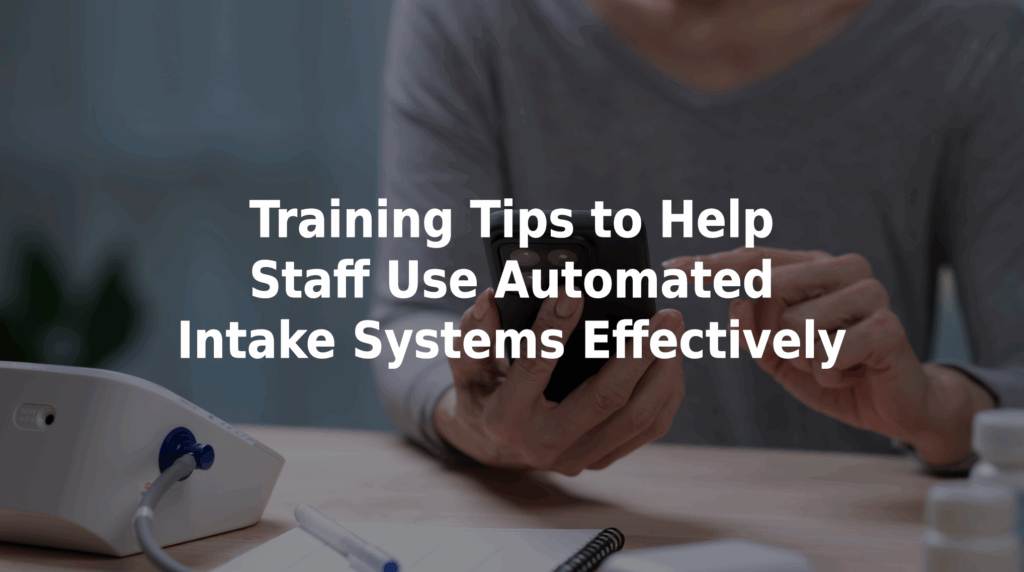Training Tips to Help Staff Use Automated Intake Systems Effectively
Healthcare automation is only successful when staff feel confident and supported by their tools. Clinical operations managers play a key role in preparing both nonclinical and clinical teams for these investments in technology. Below, we outline some training tips to help staff use automated intake systems effectively that will ensure a smooth transition, consistent performance, and maximum value.
Why Training Matters for Automated Intake
Even the most intuitive platforms require staff understanding and buy-in. Without proper onboarding:
- Staff may work around the system, leading to inaccurate or missing patient data.
- Patients may receive inconsistent feedback about their symptoms.
- Automation’s full benefits — such as reduced call time and improved accuracy — may not be fully utilized, limiting your ROI.
Proper training builds trust, reduces resistance or hesitancy with new tools, and gives you a far better chance of achieving your intake goals.
Key Training Strategies for Success
1. Introduce the ‘Why’ Before the ‘How’
Explain the intent behind the automation you’ve selected — how it improves accuracy, reduces workload, and supports better care. Help staff see it as a support tool, not a replacement of them or their services.
2. Customize Training by Role
Tailor sessions based on whether the employee is:
- A nonclinical call operator.
- A triage nurse or provider who receives intake messages.
- An administrator monitoring performance.
Each group will use the system differently and should understand their specific responsibilities.
3. Use Real Scenarios and Practice Cases
Hands-on examples build familiarity and confidence. Simulate patient messages using the automated tool, and walk through how they are documented, escalated, and reviewed.
4. Highlight Escalation and Override Protocols
Staff should know how to handle exceptions, such as:
- When to intervene manually.
- Who to contact for help or quality concerns.
5. Provide On-Demand Learning Resources
Offer short videos, quick-start guides, and system tip sheets that staff can reference at their convenience, especially during busy shifts or onboarding.
6. Reinforce With Feedback and Ongoing Support
Create open channels for staff to ask questions and suggest improvements, either with the automation or the processes it affects. Monitor use of the automation, and offer refresher sessions based on those audit results.
How MedMessage Automate Supports Effective Training
TriageLogic’s MedMessage Automate, a solution that allows patients to self-report their symptoms directly to their providers, is automation built with simplicity and support in mind. Its intuitive interface, real-time guidance, and clear instructions make it easy for patients to use, while improving staff performance.
Its benefits include:
- Secure SMS links to dynamic intake forms.
- Built-in prompts that reinforce clinical logic.
- Support materials for your staff.
- Compliance with HIPAA.
- The ability to integrate with your in-house EHR.
With the right automation, your staff will feel empowered — not overwhelmed — to manage patient requests and call volume.
Set Your Team Up for Success
Invest in training and automation that drives confidence and performance.
Want to learn more about how MedMessage Automation works, and how it can benefit your team? Contact us today to schedule a demo!

